Fall chrysanthemums (which we lovingly call just “mums”) can last for as long as two months in bloom. Often, we don’t get this long of a bloom period. Many of us experience big, full flushes of flowers, and then the plants look spent and sad, and the show seems mostly over.
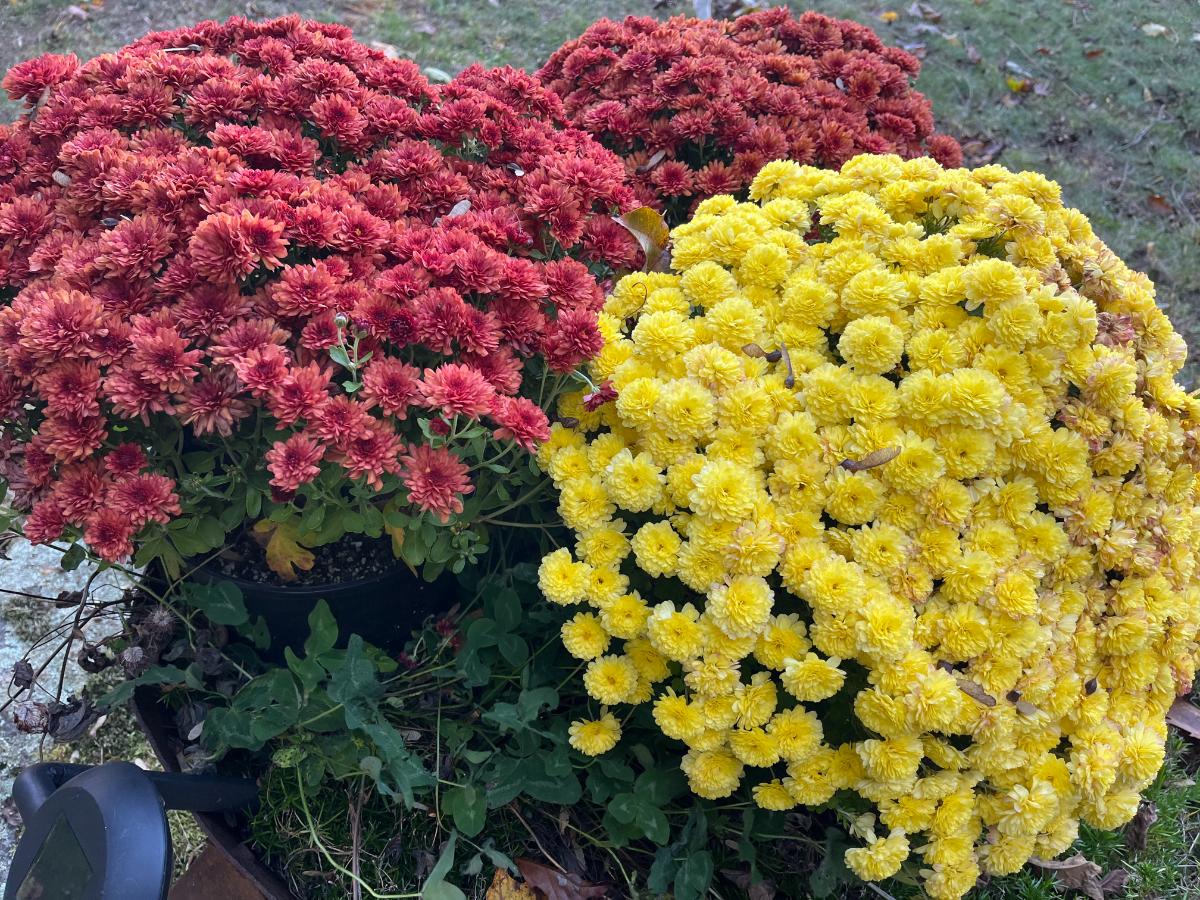
It doesn’t have to be this way. With a little effort and by taking the time to provide just a touch more TLC, you can keep your mums blooming through the fall season.
Jump to:
- The Key to Long Blooming Mums is Pruning and Deadheading
- 1. Deadhead as soon as flowers are spent
- 2. Use thin, needle-nosed nippers
- 3. Be careful not to cut or break the stems
- 4. Gently follow the stem from beneath the dying flower down to the first set of leaves
- 5. Cut at the first leaf set
- 6. Remove cut stems from the plant
- 7. Repeat about weekly to keep plants looking fresh and buds reblooming
- Early Care and Deadheading Equals Long Bloom Life for Fall Mums
The Key to Long Blooming Mums is Pruning and Deadheading
Good, regular watering and avoiding wetting the flowers, buds, and foliage will greatly extend the life of your fall mums. If you want to extend the bloom time, you need to prune the plants a little and keep up with deadheading.
Deadheading mums takes only a little time. You’ll want to deadhead your mums about once a week to keep the plant looking great, get rid of discolored, brown, and dying flowers, and to allow new buds the light and resources they need to come into full bloom.
Deadheading and pruning mums aren’t particularly hard, but there are a few key tips that will keep your plants looking their best and blooming their longest:
1. Deadhead as soon as flowers are spent
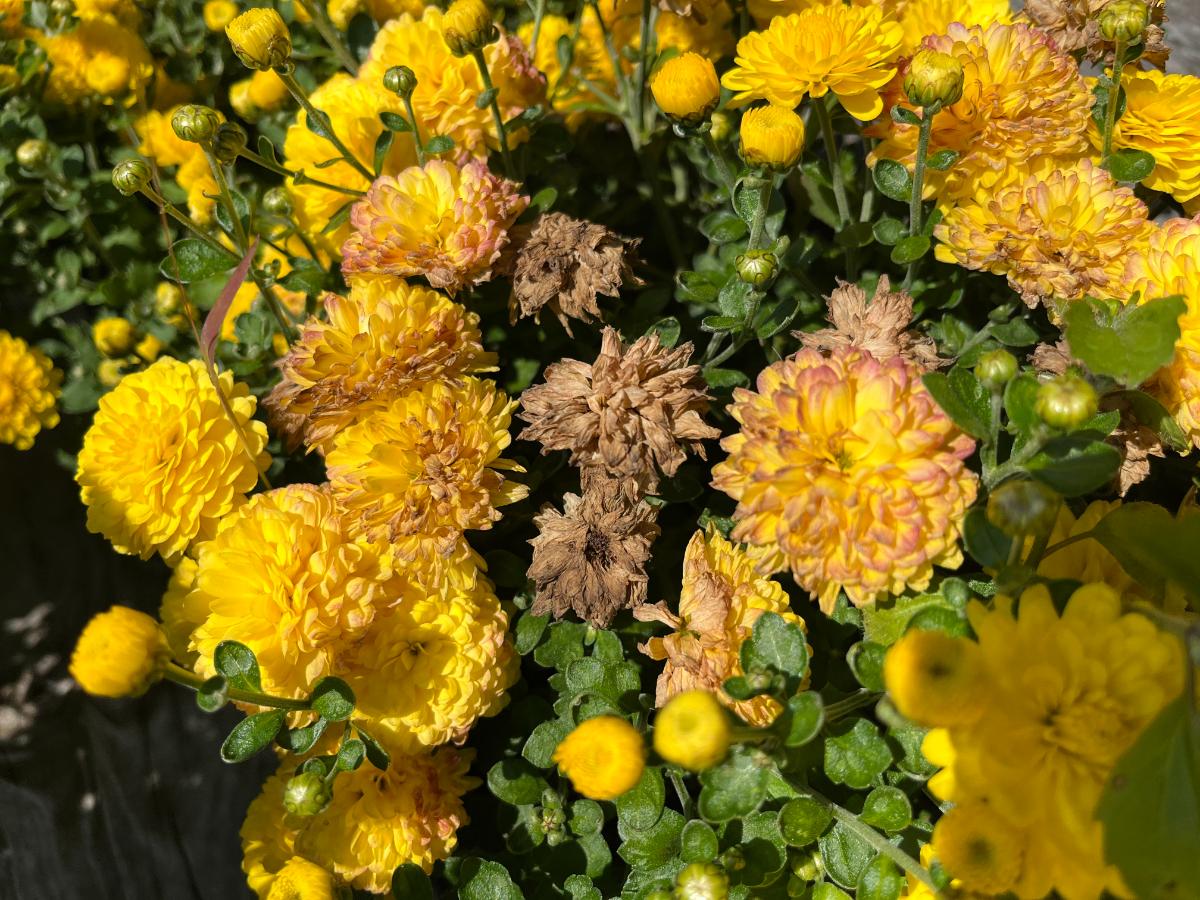
As soon as flowers begin to fade and look past their prime, deadhead them.
Waiting won’t bring the flowers back. All it will do is cause the plant to continue to send energy and resources to that dead flower, for no good reason.
Those are resources and energy that can -- and should -- be going to buds and to new, bright, opening blooms.
The more energy you can redirect to new buds and blooms, the stronger your plant will be. Deadheading also frees up energy to send to root growth to support the plant and flowers better.
Deadheading early sends signals to the plant to try to mature the upcoming buds and, hence, more flowers. New buds aren’t likely to set (though some may develop), but the small buds behind the flowers will have the energy they need to mature.
Not deadheading spent blooms tells the plant to try to set seed instead. Then, the plant begins to shut down bud and flower production in an effort to propagate itself through seed.
Growing and maturing seed draws a lot from a plant, which is why flowering stops. It also stops because the plant thinks it has fulfilled its purpose in life -- to reproduce. It doesn’t need any more flowers.
While you could save seed from mums, most people don’t because it seriously degrades the fall display, and most mums are hybrids and will cross-pollinate. This means that the seed you save isn’t likely to give you the same plant it was saved from.
2. Use thin, needle-nosed nippers
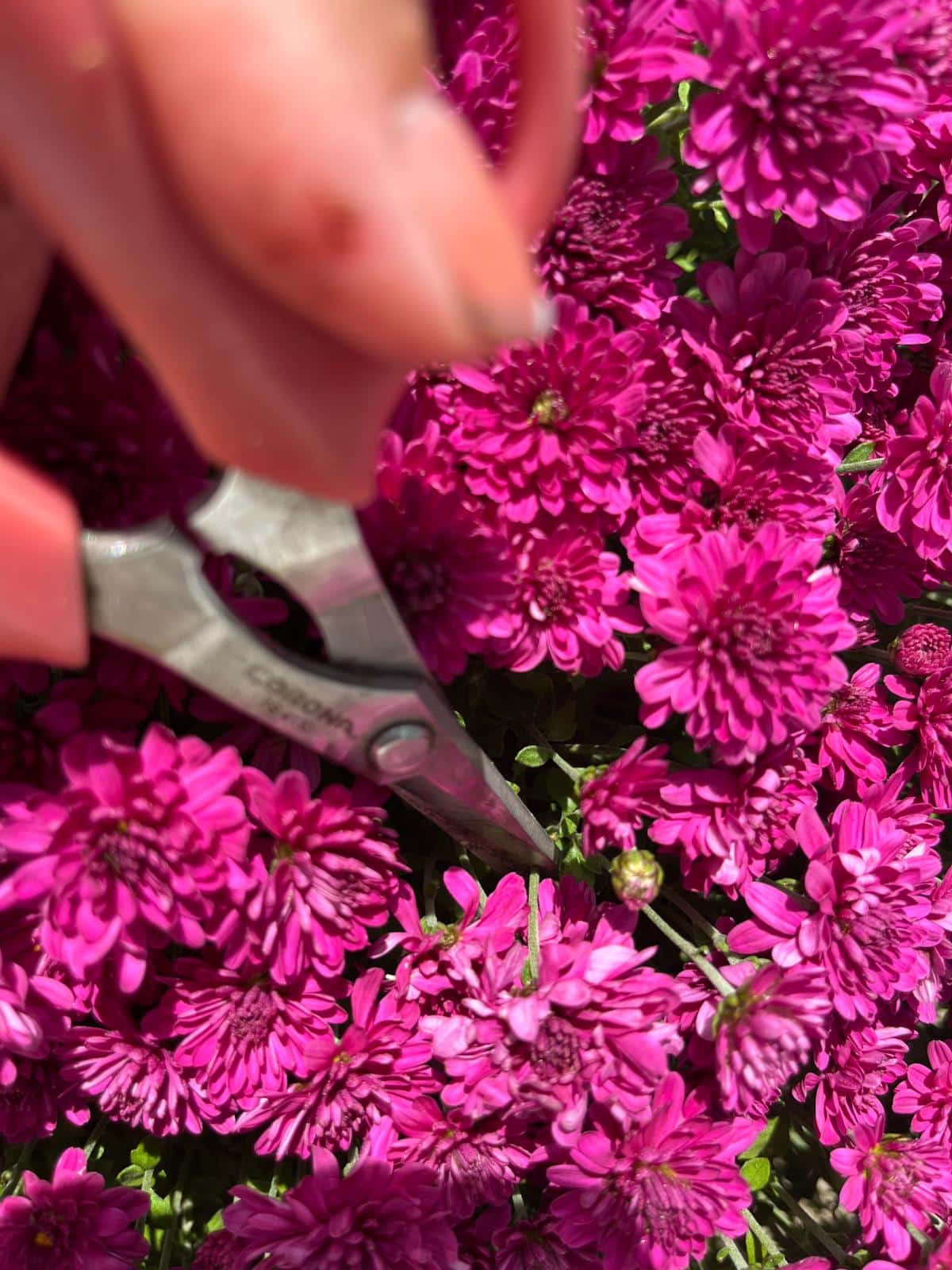
Mums are compact growers. Their stems, buds, and flowers are close together.
There isn’t a lot of room to work between the stems of mums.
To get down beneath the flowers, you’ll need a fine tool. Go for a small pair of cutters or nippers. Choose one with a fine point and longer, needle-nose blades about 2 ½ to 3 inches long.
This will give you enough tools to work with without damaging the rest of the plant as you work.
You could pinch flowers off with your fingers, but a good small pair of long-nosed clippers will give you a cleaner cut. You will be much less likely to break off or damage the stems.
3. Be careful not to cut or break the stems
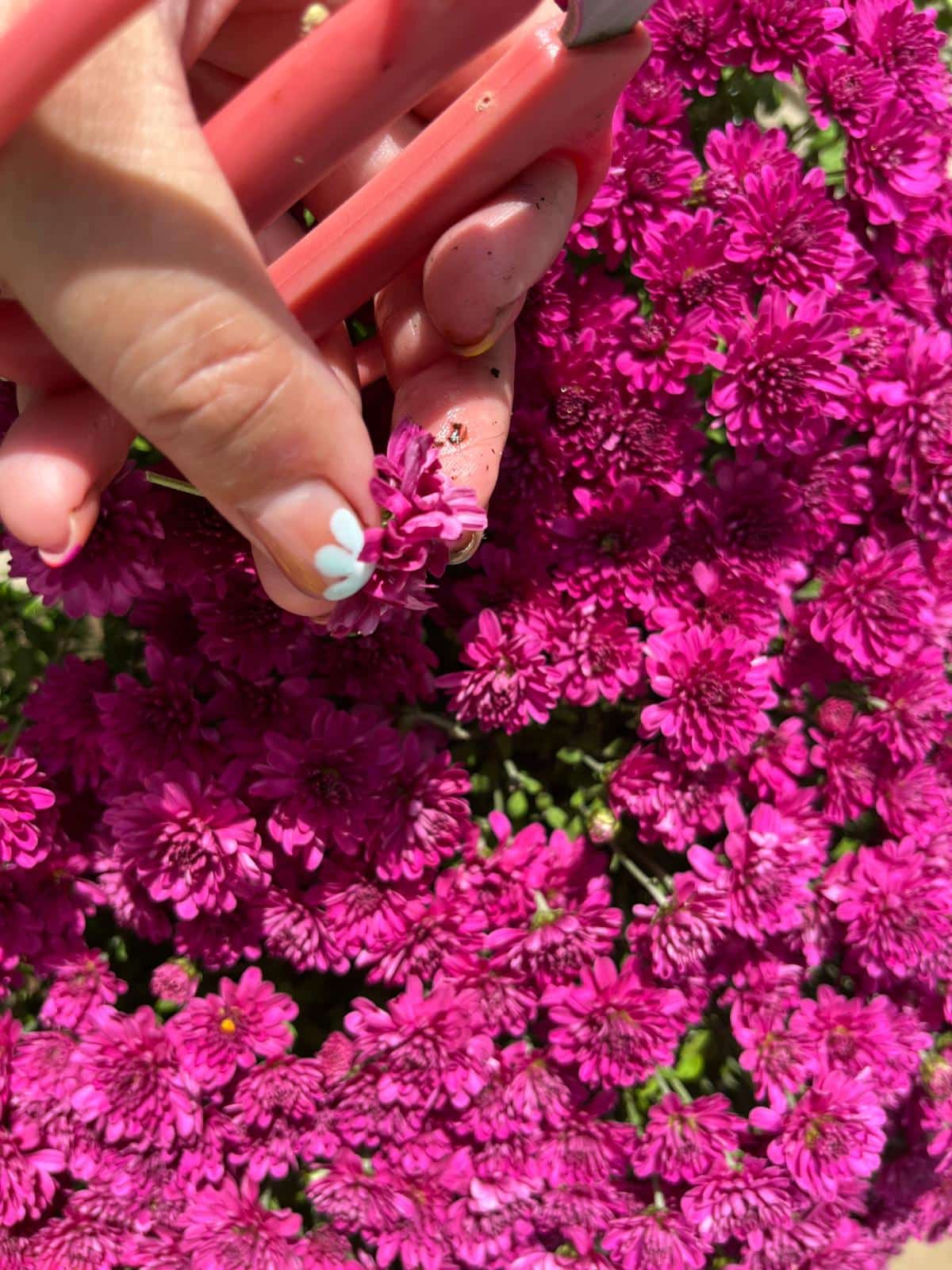
The stems on fall mums break easily if bent or snapped.
And so, when you prune or deadhead your mums, you need to take care not to break them.
Broken stems on mums will not regrow quickly, and you will have a large bare spot in your plant all season if you break any part of it. The plant simply won’t be able to grow and fill it in during the display season.
4. Gently follow the stem from beneath the dying flower down to the first set of leaves

Without roughing up the plant and breaking stems, follow the dying flower back from its point of attachment down the stem. Guide your nippers down to the point just above the first set of leaves you come to.
5. Cut at the first leaf set

Make your cut here, right above the first set of leaves. These leaves should be in good, green shape, but if they’re not, then go ahead and move a little further down to a good-looking, fresh set of leaves.
6. Remove cut stems from the plant
Take a small nip here and pull the stem and dead flower up out of the plant. Dispose of it.
7. Repeat about weekly to keep plants looking fresh and buds reblooming
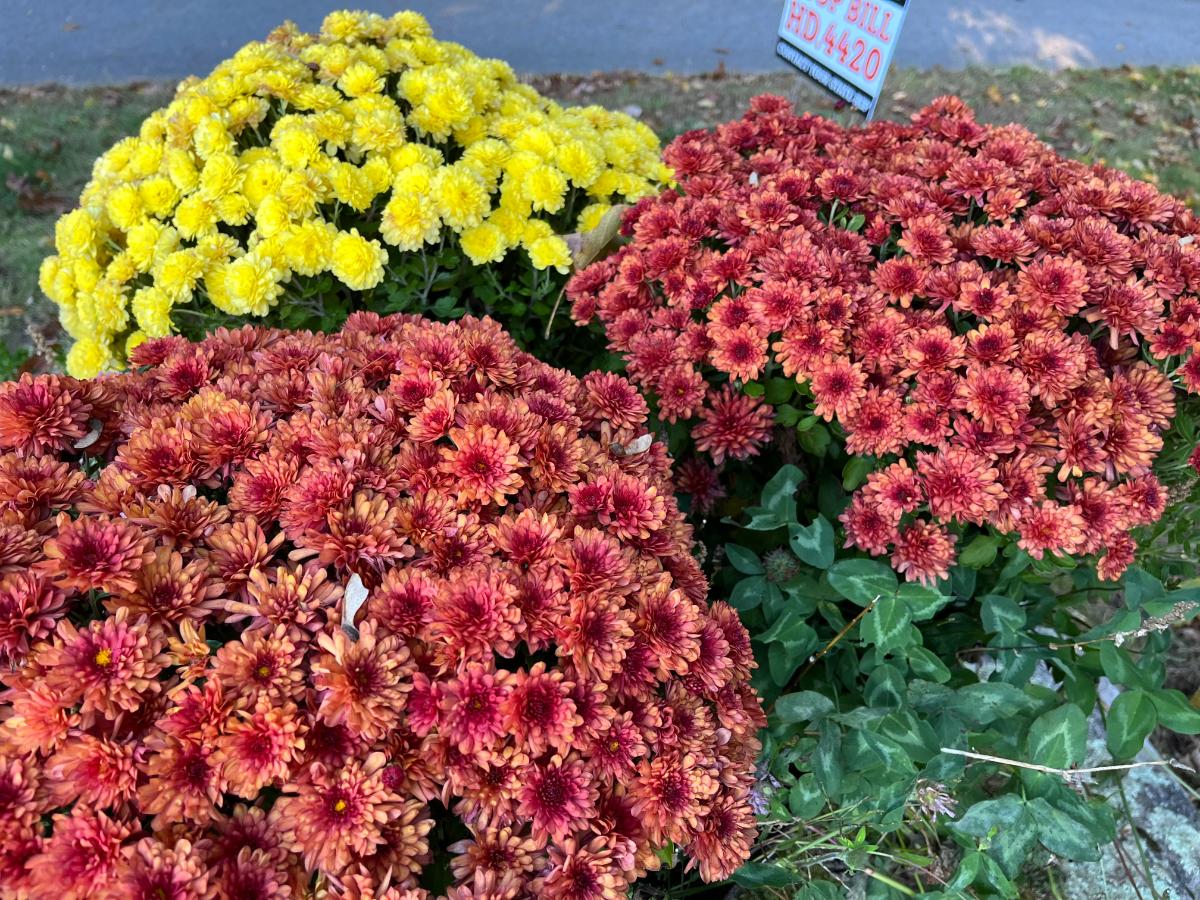
Deadhead any time you see flowers starting to die back on your fall mums. You’ll probably need to do this about once every week to two weeks (whenever flowers start to fade).
In wet, rainy weather, the flowers are likely to die faster, and you may need to deadhead more often. They will also droop, drop, and die if the plants are underwatered.
Early Care and Deadheading Equals Long Bloom Life for Fall Mums
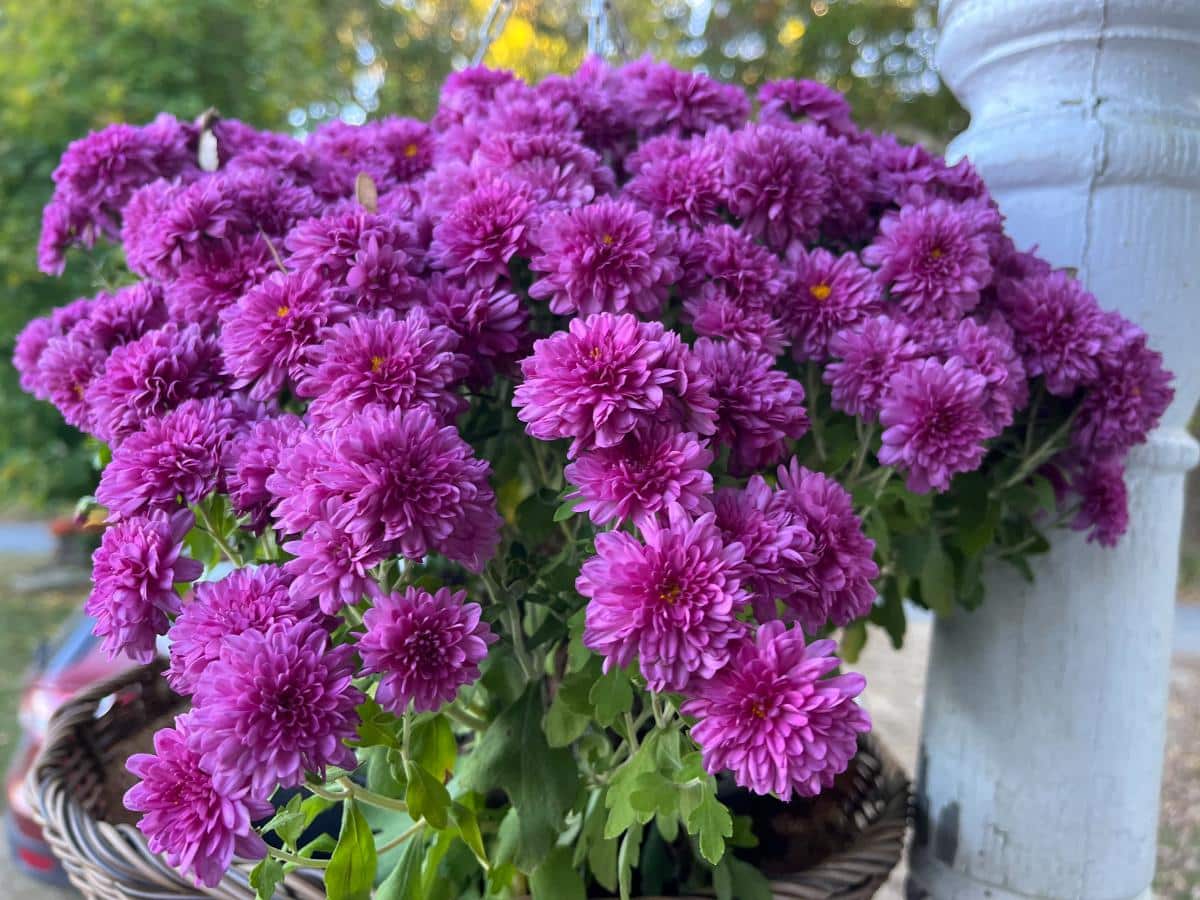
Start deadheading and pruning your mums as soon as the first flowers begin to fade. If you start this early enough, you may get more branching and buds coming behind the existing buds that have already formed.
Even if you don’t get new growth and new buds forming (which is a hard ask of slow-growing fall mums), you’ll at least be letting the buds that are there have the chance to grow and bloom fully. (Some of these can be so tiny that they’ll go unseen until you make way for them.)
Deadheading is your best chance to keep your fall mums looking their best. It removes ugly, brown, dying flowers. It trims back the stems to allow more light access to the next sets of buds. Trimming and deadheading also prune away stems and old flowers to reveal more fresh leaves and foliage.
Overall, a regular practice of deadheading your fall mums keeps them looking their best and blooming their longest. It’s a big mistake and an unnecessarily short life for mums if you’re not deadheading them through the fall months!

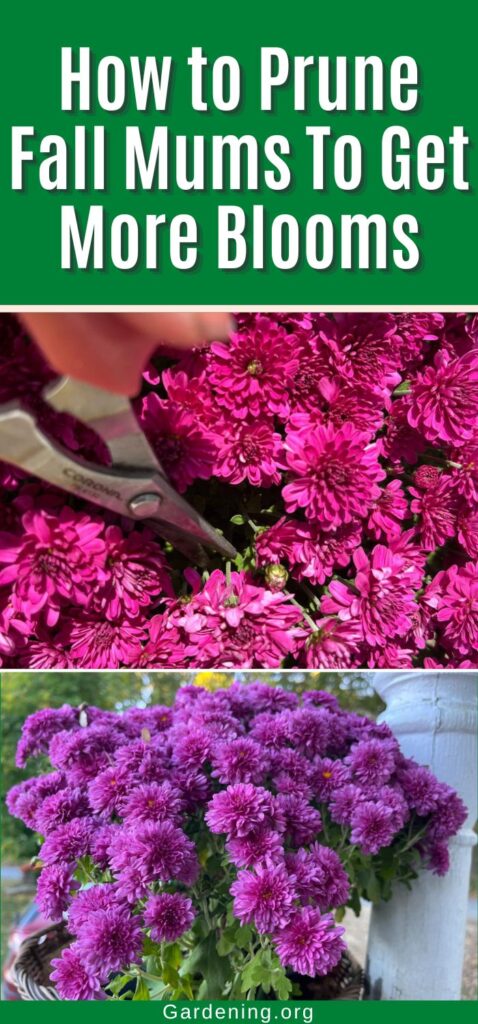
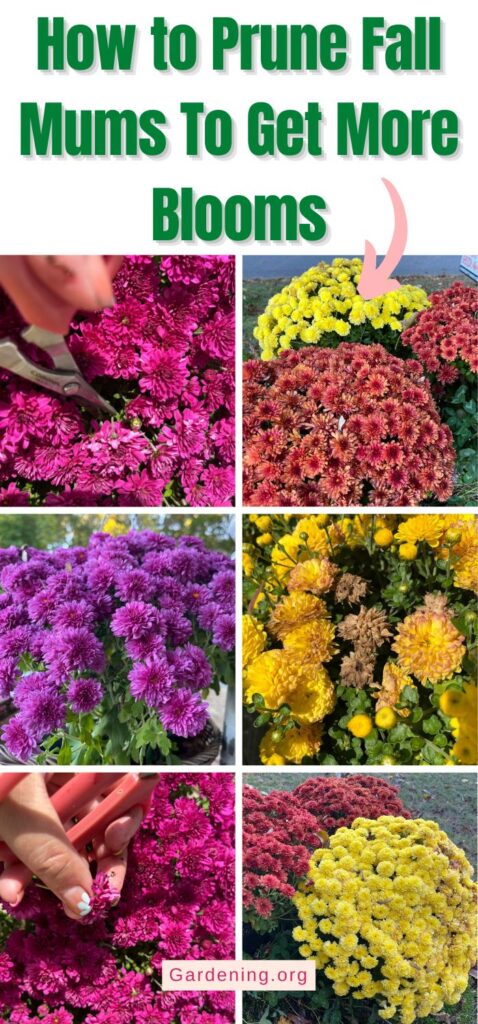

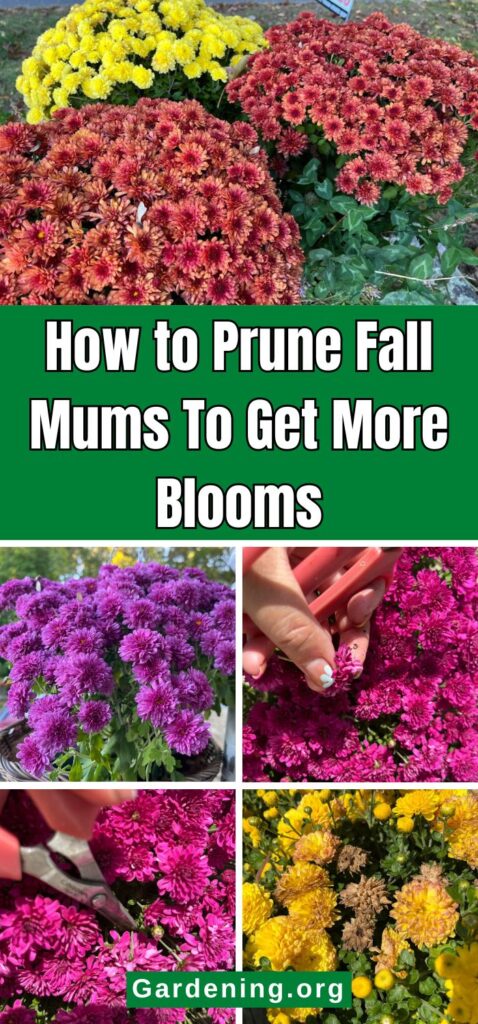
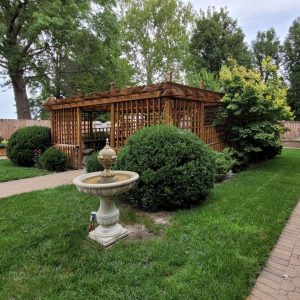
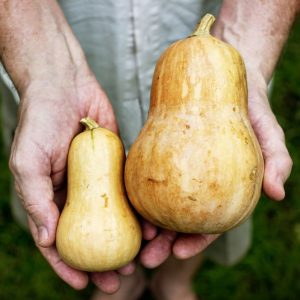
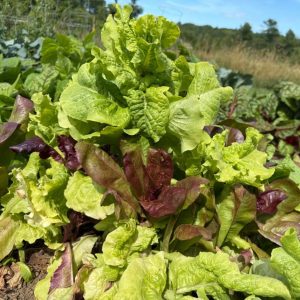
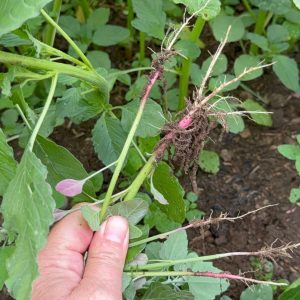
Leave a Reply